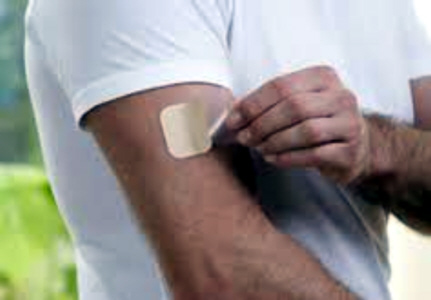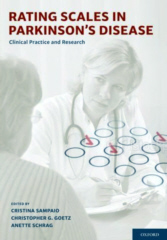.gif) VIARTIS � |
||||||
|
PARKINSON'S DISEASE |
||||||
| � � |
||||||
|
� � � � |
PARKINSON'S DISEASE NEWS � |
� � � � � � � � � � � � � � � |
||||
|
JULY 2012 ������������������ ������������������������������������������������������������������������������������������������������������������������������ 26th July 2012 - News release SINGLE DRUG FOR PARKINSON'S, ALZHEIMER'S AND MULTIPLE SCLEROSIS A new class of drug is being developed at Northwestern University as a single therapy for Alzheimer�s Disease, Parkinson�s Disease, Multiple Sclerosis and traumatic brain injuries by reducing inflammation in the brain. Northwestern University has been issued patents to cover this new drug class and has licensed the commercial development to a biotech company that has recently completed the first human Phase 1 clinical trial for the drug. The drugs in this class, represented by MW151 and MW189, target a particular type of brain inflammation, which they claim is a common denominator in these neurological disorders, as well as in traumatic brain injury and stroke. They claim that brain inflammation plays a major role in the progressive damage characteristic of these chronic diseases and brain injury. For more information, go to the News release.
� 16th July 2012 - News release NEUPRO LAUNCHED IN THE U.S.A. TO TREAT PARKINSON'S DISEASE The role of UCB announced today that Neupro (Rotigotine Transdermal System) is now available in U.S. pharmacies. Neupro was approved by the U.S Food and Drug Administration in April to treat the signs and symptoms of early and advanced stage idiopathic Parkinson�s disease and moderate-to-severe primary Restless Legs Syndrome. Neupro is a once-daily patch that provides continuous delivery of the dopamine agonist rotigotine for 24 hours. Neupro is available in four different dosage strengths for the signs and symptoms of Parkinson�s disease (2 mg/24 hours, 4 mg/24 hours, 6 mg/24 hours, and 8 mg/24 hours).
Case reports suggest that patients can experience intense urges to gambling, increased sexual urges, intense urges to spend money, binge eating, and other intense urges, and the inability to control these urges while taking medications including Neupro. For more information, go to the News release. For a printable version of this article click here.� In order to refer to this article on its own click here.� � 13th July 2012 - New research THE EFFECT OF PHYSIOTHERAPY ON PARKINSON'S DISEASE Cochrane Database Systematic Reviews [2012] 7 : CD002817 (Tomlinson CL, Patel S, Meek C, Clarke CE, Stowe R, Shah L, Sackley CM, Deane KH, Herd CP, Wheatley K, Ives N.) Complete abstract The role of physiotherapy in Parkinson's Disease aims to maximise functional ability and minimise secondary complications through movement rehabilitation. However, there are many methods of physiotherapy that have been used in Parkinson's Disease with differing effects. An analysis was carried out of all the published studies concerning the use of physiotherapy in Parkinson's Disease. Trials were classified into the following intervention comparisons : general physiotherapy, exercise, treadmill training, cueing, dance and martial arts
� 8th July 2012 - New book RATING SCALES IN PARKINSON'S DISEASE : CLINICAL PRACTICE AND RESEARCH Cristina Sampaio, Christopher G.Goetz, Anette Schrag
� 1st July 2012 - New research FIPAMEZOLE FOR DYSKINESIA IN PARKINSON'S DISEASE Neurology 2012 Jun 27 [Epub ahead of print] (Lewitt PA, Hauser RA, Lu M, Nicholas AP, Weiner W, Coppard N, Leinonen M, Savola JM.) �Complete abstractFipamezole is a new a(2)-adrenergic receptor antagonist being assessed for its use in treating the dyskinesia that can occur in Parkinson's Disease. Dyskinesia is abnormal physical movements, in the form of writhing or jerky movements, that can be caused by chronic use of L-dopa. Over half of people taking L-dopa can eventually be affected by dyskinesia. The following video shows mild to moderate dyskinesia Video. The following video shows severe dyskinesia Video.
�
��
|
||||||
| � | ||||||
.gif) |
||||||
| � | ||||||
| �2006-2012 Viartis | ||||||
| � | ||||||
| [email protected]� | ||||||
 Despite
their claims, there is no evidence that inflammation is a primary cause of
Parkinson's Disease. Parkinson's Disease has been shown to be due to the
insufficient formation of dopamine, which is completely unaccounted for by this
method. Their recent study solely concerned Alzheimer's Disease in mice who did
not even have Alzheimer's Disease, and was not shown to rid or reduce
Alzheimer's Disease. They have not obtained any evidence at all concerning
efficacy in Parkinson's Disease. For a printable version of this article
Despite
their claims, there is no evidence that inflammation is a primary cause of
Parkinson's Disease. Parkinson's Disease has been shown to be due to the
insufficient formation of dopamine, which is completely unaccounted for by this
method. Their recent study solely concerned Alzheimer's Disease in mice who did
not even have Alzheimer's Disease, and was not shown to rid or reduce
Alzheimer's Disease. They have not obtained any evidence at all concerning
efficacy in Parkinson's Disease. For a printable version of this article
 In
clinical trials, the most common adverse reactions were nausea, vomiting,
somnolence, application site reactions, dizziness, anorexia, insomnia,
hyperhidrosis, peripheral edema, and dyskinesia. There is an increased risk for
hallucinations in people with advanced-stage Parkinson�s Disease when they are treated
with Neupro. Neupro may cause symptomatic postural/orthostatic hypotension and
syncope (fainting), especially during dose escalation, elevated blood pressure,
elevated heart rate, weight gain and fluid retention. Neupro should be used with
caution in people with cardiovascular disease.
In
clinical trials, the most common adverse reactions were nausea, vomiting,
somnolence, application site reactions, dizziness, anorexia, insomnia,
hyperhidrosis, peripheral edema, and dyskinesia. There is an increased risk for
hallucinations in people with advanced-stage Parkinson�s Disease when they are treated
with Neupro. Neupro may cause symptomatic postural/orthostatic hypotension and
syncope (fainting), especially during dose escalation, elevated blood pressure,
elevated heart rate, weight gain and fluid retention. Neupro should be used with
caution in people with cardiovascular disease. Physiotherapy
was found to be beneficial using most methods in the short term (less than three
months). The benefit was significant when using the following tests : velocity,
step length, two-minute or six-minute walk tests, Timed Up & Go, Functional
Reach Test, Berg Balance Scale and clinician-rated UPDRS. However, for some
outcomes (velocity, Berg Balance Scale and UPDRS), the differences observed were
at, or approaching, what are considered minimally clinical important changes.
The review illustrates that a wide range of approaches are employed by
physiotherapists to treat Parkinson's Disease. There was no evidence of differences in treatment effect between the types of
physiotherapy used. For a printable version of this article
Physiotherapy
was found to be beneficial using most methods in the short term (less than three
months). The benefit was significant when using the following tests : velocity,
step length, two-minute or six-minute walk tests, Timed Up & Go, Functional
Reach Test, Berg Balance Scale and clinician-rated UPDRS. However, for some
outcomes (velocity, Berg Balance Scale and UPDRS), the differences observed were
at, or approaching, what are considered minimally clinical important changes.
The review illustrates that a wide range of approaches are employed by
physiotherapists to treat Parkinson's Disease. There was no evidence of differences in treatment effect between the types of
physiotherapy used. For a printable version of this article
 Publisher's
description : For many years, the need to develop valid tools to evaluate signs
and symptoms of Parkinson Disease has been present. Rating Scales in Parkinson's
Disease: Clinical Practice and Research is written for researchers from the
medical and social sciences, and for health professionals wishing to evaluate
the progress of their patients suffering from Parkinson's Disease. The book is
both exhaustive in the description of the scales and informative on the
advantages and limitations of each scale. As such, the text clearly guides
readers on how to choose and use the instruments available. Extensive
cross-referenced tables and charts integrate the parts of the book to
facilitate readers in moving from one symptom domain to another.
Publisher's
description : For many years, the need to develop valid tools to evaluate signs
and symptoms of Parkinson Disease has been present. Rating Scales in Parkinson's
Disease: Clinical Practice and Research is written for researchers from the
medical and social sciences, and for health professionals wishing to evaluate
the progress of their patients suffering from Parkinson's Disease. The book is
both exhaustive in the description of the scales and informative on the
advantages and limitations of each scale. As such, the text clearly guides
readers on how to choose and use the instruments available. Extensive
cross-referenced tables and charts integrate the parts of the book to
facilitate readers in moving from one symptom domain to another.
 The
study was carried out in the U.S.A. and India. The total study population showed
no statistically significant difference. However, because of the differences
between the� U.S. and Indian study populations, a prespecified subgroup
analysis of U.S. subjects was conducted, showing fipamezole at 90 mg moderately
reduced dyskinesia that was due to to L-dopa. The response was shown to be
according to the dose used when assessing the different dosages (30mg, 60mg, 90
mg fipamezole). Fipamezole induced mild transient blood pressure elevation and
was associated with "an acceptable profile of adverse effects." For a printable version of this article
The
study was carried out in the U.S.A. and India. The total study population showed
no statistically significant difference. However, because of the differences
between the� U.S. and Indian study populations, a prespecified subgroup
analysis of U.S. subjects was conducted, showing fipamezole at 90 mg moderately
reduced dyskinesia that was due to to L-dopa. The response was shown to be
according to the dose used when assessing the different dosages (30mg, 60mg, 90
mg fipamezole). Fipamezole induced mild transient blood pressure elevation and
was associated with "an acceptable profile of adverse effects." For a printable version of this article